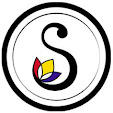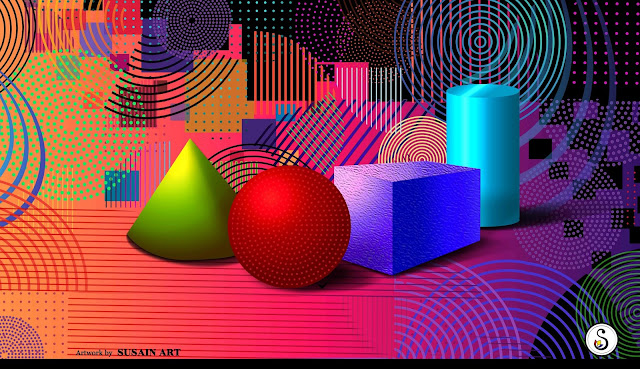
For a Chef, food relates to the emotion, herbs, smell, colour of the food. Every ingredient is essential for cooking and should be in an exact amount. You should know how much ( amount of) spices you have to put in the recipe to make it a delightful recipe. For example, salt should be in a proper amount in the food, not too much nor too low. Too much salt in the food makes it sour. Furthermore, too less salt in the food makes it sweet. You have to put everything exactly the way it should be.
Photo by Nadine Primeau
Likewise, for an Author, every piece of writing includes peculiar facts and details. These facts and details are essential elements. It should be dramatic but not too dramatical because it will become contrive. The character should be more natural in terms of nature. The story structure should be focused on and related to the main character. The emotion and characteristics of the characters should be flows with the story or writing. It should not be too exaggerated or out of the story. Otherwise, the narrative will not work for the audience or the reader.
Photo by Patrick Tomasso
Furthermore, for a Musician, it is important to put each element which is Sound (overtone, timbre, pitch, amplitude, duration), Melody, Harmony, Rhythm, Texture, Structure, Expression (dynamics, tempo, articulation) in the accurate phase.
Musicians can talk about the key of "A", and they all know it means "a pitch relating to 440 oscillations per second of Vibration.
Music also considers a healing tool for human souls. In our leisure time, we often listen to music. If one of these elements missed or not correctly stabilised, you may not enjoy the music. Also, it will not please your ears or soul.
For a Dancer, these four elements are essential in the dance Time, Body, Energy, Space. They know when and how to move their body with the correct timing and beats of the music. They also know how to utilise the space and which props to use to manipulate or to enhance the dance. Props may be manipulated to exaggerate gestures, to create rhythms, to convey ideas or feelings. When a dancer put the elements into their dance, it is considered as the best performance.
But the time they went out of rhythm or missed one of these elements, It will not please the audience.
Emotion is the common element in all the above categories. It also plays a crucial role in Art.
In the same way, for an Artist, every element of Art is essential in an artwork. The artist manipulated these elements with the principles of design and compose a piece of art.
However, Artwork doesn't need to include all the elements. sometimes, only two elements present within the art.
Through knowing these elements, one can discuss, depict, analyze, critic, appreciate an Artwork/ Design/ Painting and by knowing it one can create art by themself.
Line, Colour, Tone/Value, Form/ Shape, Texture, Space are the main elements of an Art.
Let's discuss it furthermore,
2) COLOUR: May cause emotional reactions. Red gives the impression of heat and excitement; blue gives the sensation of coldness and restfulness. Warm colours appear to come forward, while cool colours suggest distant objects. Most objects get their colour from the light when light shining on them. They absorb some wavelengths of light and reflect others. Different wavelengths absorbed to various degrees. What gets reflected is a mixture of what does not get grasped at each wavelength. Other objects (such as the sun) emit light as a spectrum of various wavelengths.
All colours come from light; if there is no light, there is no colour. The name of the colour is called HUE (red, blue, yellow and their mixtures).
a) PRIMARY COLOURS - They can't be made by mixing other colours but can be combined to create a valuable range of colours. Red, Yellow, Blue. (RBY)
b) SECONDARY COLOURS - Mixing Primary Colours. Orange, Green, Violet
c) INTERMEDIATE COLOURS - Combining three accurate primary colours in equal volumes would produce black, but this is hard to accomplish in practice. Therefore a "key" pigment, usually black, is added to printing to create dark shades more efficiently. This mixture referred to as CMYK, where K stands for Key (BLACK).
Yellow-green, Blue-green, Blue-violet, Red-violet, Red-orange, Yellow-Orange.
d) TERTIARY COLOURS - A tertiary colour or intermediate colour is a colour made by combining the full saturation (purest (truest) version) of one primary colour with half saturation of another primary colour and none of a third primary colour. Citron, Russet, Olive.
e) NEUTRAL GREY - The three primary colours mixed.
f) SPECTRUM - The colours which together make up sunlight, the colours seen Through a glass prism, the seven colours of the rainbow,
VIBGYOR:- Violet, Indigo, Blue, Green, Yellow, Orange, Red
Violet has the shortest wavelength (highest frequency), and Red has the longest wavelength (lowest frequency)
e) COMPLEMENTARY COLORS - The mixture of two primary colours say Red and Yellow, i.e., Orange is complementary to other primary colours like Blue.
2) TONE: The basic meaning of tone in art is the amount of lightness or darkness, including the light and shade, on an object.
3) FORM: Form is the essential structure or the organization of all parts in a work of art.
4) TEXTURE: Texture in art pertains to the character of the surface. The texture can be tactile (as felt with the fingers) or visual.
5) SPACE: Space in art is the vacant area within or without an object, such as inner space in architecture, a penetrating area in the voids of sculpture, or the illusion of space or distance on the flat surface of a painting or drawing.
Elements of Art allow us to
1) Specify what an artist has done.
2) Analyze what is going on in a particular piece of art.
3) Communicate our thoughts and findings using a familiar language.















No comments:
Post a Comment